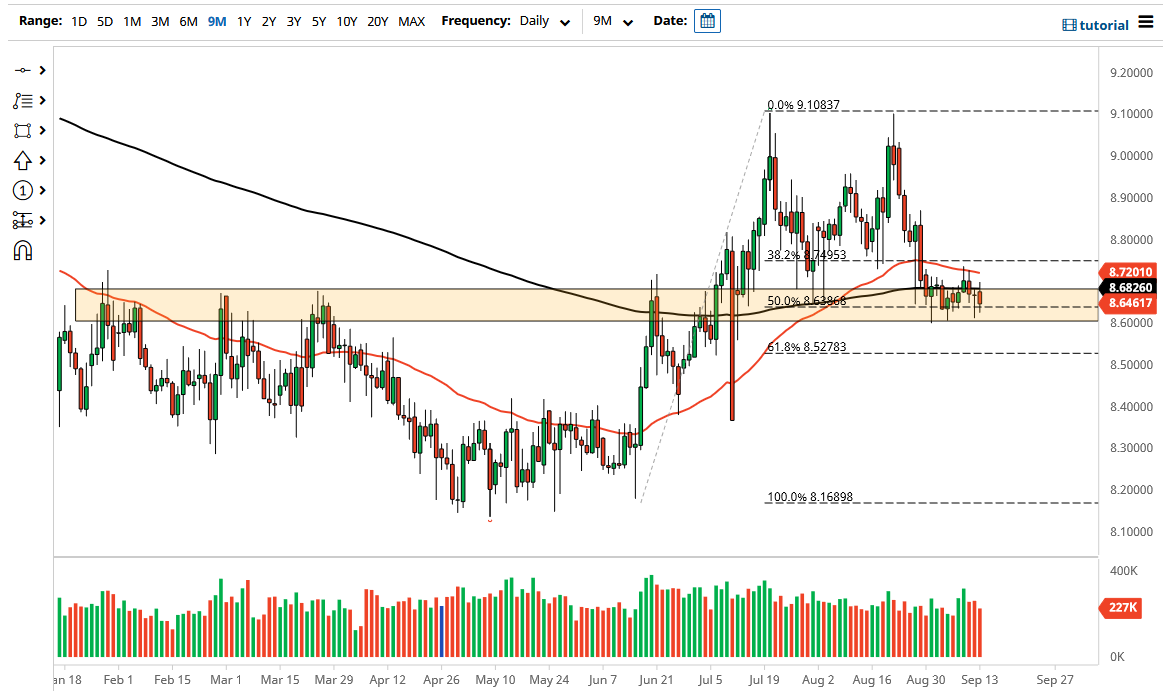The US dollar has been going sideways against the Norwegian krone over the last couple of weeks. We're grinding back and forth at what would be the 50% Fibonacci retracement of the massive swing low. The main reason that I am paying so much attention to this market right now is that the Norwegian krone is highly sensitive to the crude oil market and is liquid enough to have traders involved in it daily.
When I look at this chart, it is very obvious that the 200-day EMA is now trying to offer a bit of resistance, and the 50-day EMA very likely could drop below it, kicking off the so-called “death cross.” That being said, I think that will probably happen if we can break down below the 8.6 NOK level, which is an area that offered support a couple of times over the last two weeks. Dropping below there then gets this market really moving to the downside. I would also point out that at the absolute highs, near 9.1 NOK, we had formed a fairly obvious “double top” with a couple of shooting stars over the course of roughly 7 weeks.
A lot of this is going to come down to the crude oil markets, but it will also come down to the US dollar itself. While the Norwegian krone is not necessarily on the US Dollar Index itself, if the dollar is strengthening in general, it will show itself over here also. If this market were to break above the 8.75 NOK level, then I think the market could go much higher and we may have seen the most of the selloff. However, breaking down below that 8.6 NOK level opens up the possibility of a drop initially towards the 8.50 NOK level, and then possibly even as low as 8.25 NOK after that.
Pay close attention to the crude oil markets because they did break a little bit of a trend line to the upside today. If we do get a bit of follow-through, this pair will more than likely drop, offering you a way to play crude oil via the commodities markets, or just simply the Forex markets in this pair. Sometimes, and this is one of those times, it is a much “cleaner trade” to trade the USD/NOK pair than it is the USD/CAD pair, because the United States and Canada do so much trade together that there are a lot of crosscurrents at the same time.


